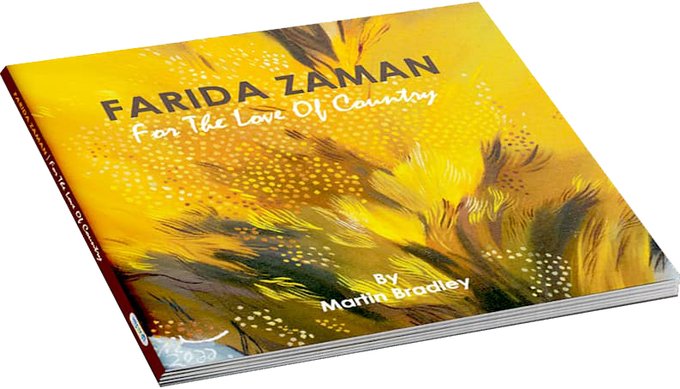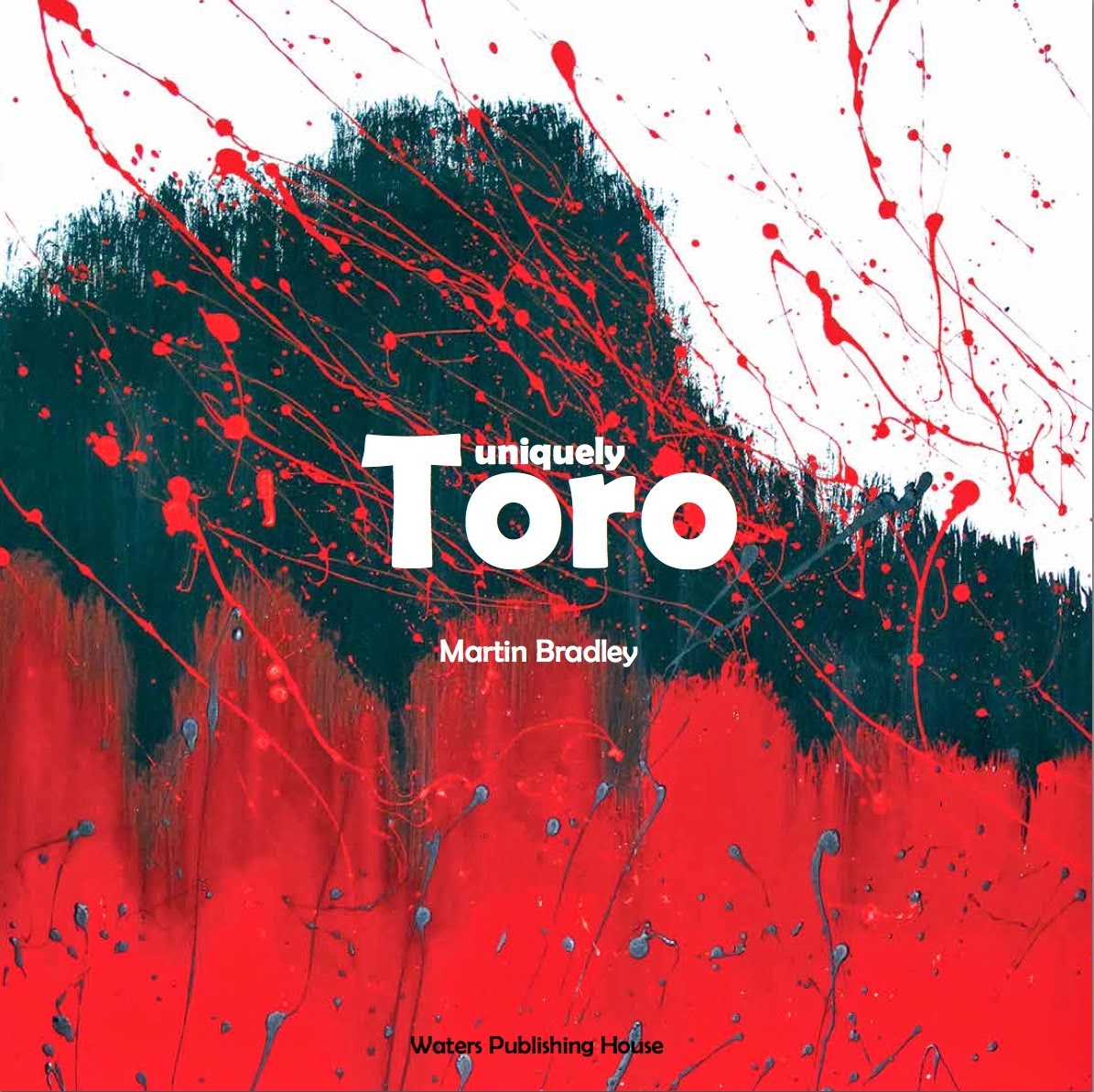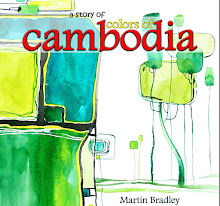 |
| Shelter - Jamal Ahmed 2021 |
Stray birds of summer come to my window to sing and fly away.
And yellow leaves of autumn, which have no songs, flutter and fall there with a sigh.
Stray birds (part) Rabindranath Tagore, 1916.
Jamal Uddin Ahmed is a recipient of Bangladesh’s prized (second highest) civilian award the ‘Ekushey Padak’ in ‘Fine Arts’ (given by Prime Minister Sheikh Hasina in 2019). He has risen to be both Professor at the Department of Drawing & Painting of the University of Dhaka, and a much lauded figure in the art world of Bangladesh. Like many modern Bangladeshi painters, Jamal Ahmed studied at the art school (Faculty of Fine Art) in the University of Dhaka, fondly called ‘Charukala’, then went on to study abroad in Poland, Japan and the USA.
In Bangladesh’s 7th century city of Dhaka (developed out of Jahangirmagar) I had the great pleasure of seeing Jamal Ahmed on more than one occasion. Ultimately I was invited to visit his studio. We talked and ate traditional Mithai (or Bangladeshi sweets) in that airy studio where I had the privilege of seeing his half-finished figurative paintings. The artist had explained that there were only few paintings to see, for as soon as he finished a painting it flew (metaphorically), out the door and into waiting collectors’ hands. Nevertheless, I had felt honoured to be there and to see those paintings before completion, and to have the freedom to wander around this remarkable artist’s studio.
While many artists in Bangladesh shift towards non-representational art, Ahmed is famed for his figurative work. He has, specifically, been noted for his portraiture and romanticised figures of women. Although some may wish to label Ahmed’s work as ‘Realism’, to which some degree it is, his work flutters between the expectations of the sort of realism considered by Gustave Courbet Champfleury (Le Realisme, 1855) and textured ‘sketches’ or revelations and a search for the ‘truth’ of lives in Bangladesh.
This may be witnessed in images included in one exhibition, at Galleri Kaya, Dkaka (2020), featuring works such as the textured, mixed media, ensemble ‘Way to home - 2’ which incorporates very vivid images of women and small children. Another (from the same catalogue) is, again another mixed media artwork titled ‘Bathing’, with a female figure seen half naked from the rear, with a backdrop of fishing vessels - a natural image with romanticised, hazy, colouration. There is ‘Nari o Nodi (women and rivers) -2’, more mixed media on paper with a stunning young woman with a red sari top expectantly looking out to the water. In ’Waiting - 2’ another young lady, with a red sari top and yellow raiment, holds a small child. Together they watch a lone fisherman at work with his boat and nets. Again there is expectancy and perhaps longing in a couple’s simple tale. Then there is ‘Gypsy’. In this highly textured painting a lone fisher-woman carries a wicker basket of fish from our right. She is painted a third of the way into the picture, and before she moves out of frame we her audience observe both her grace and her dedication to her hard life. A riverine swathe of blue cuts across the paper as a red sun sets.
Ahmed’s figure suggests a homage to ‘Shilpacharya’ (great master of art), Zainul Abedin’s painting ‘Santhal women’ (1969). Abedin was, of course, a founding father of modern Bangladeshi art. These images, and other figurative works by Jamal Ahmed, demonstrate the artist’s dexterity with, and his creative understanding of the female form, as well as an empathy for the plight of the Bangladesh fisherfolk and a feeling for his country’s rurality.
Beyond images of females, Ahmed’s oeuvre extends to horses and to bird life, specifically pigeons. In the ‘Galleri Kaya exhibition catalogue’ there are no less than ten of the artist’s works containing pigeons. Some include a female figure, others are solely studies of pigeons. While Ahmed also portrays other traditional Bangladesh riverine life, such as fishermen, boats and nets, it is in his images of pigeons (the Stray Birds of this piece’s title) that he differs from the majority of his South Asian contemporaries.
Why pigeons ?
When Jamal Ahmed was a fourth year art student at ‘Charukala’ (1977), he had painted a (four foot by two feet six inches) painting of two pigeons sitting betwixt palm leaves. Another story relates that he was in New York when pigeons flew onto the balcony where he was staying, and that it was from then that he began to take a serious interest in the movement of pigeons and, later, used that form to convey another side of his figurative romanticism.
From another catalogue (Chronicles in Charcoal, November 2018, at Galleri Kaya), pigeons are prominent. There are sixteen pages devoted to them, including the catalogue’s front cover (titled Pigeons - 2). For some, Ahmed’s pigeons are to be observed as symbols of love. However that is but the beginning of their significance, for it is no wonder that the artist Jamal Ahmed should devote so much of his energy to capturing images of doves/pigeons, for they are so very prominent in the history of Dhaka as seen in Ahmed’s metaphorical meditations on nature’s beauty.
The pastel and charcoal mediums are entirely suited to Jamal Ahmed’s recreated peaceful beauty, and his constant interest in people and nature. In this work there is an emphasis on the expression of emotion through a romantic quality or spirit in thought and sublime expression, for charcoal and pastel present the perfect mediums for this expression with its softened edges and subtle blending bringing an essence of calm.
In a way these examples of Ahmed’s work bring to mind the pastel drawing techniques which the Indian artist Abanindranath Tagore had learned from Olinto Ghilardi and Charles Palmer in their idealistic romanticism, which strike at the viewer's emotions.
There are many varieties of dove/pigeon. Many languages use the same word for pigeon as for dove as, in many cases, there is little distinction between them. Bangladesh has up to seventeen species of pigeon and Dhaka, depending upon what is read and where. Like many other South Asian cities Bangladesh is famed for its pigeon population, dating back into antiquity. Pigeon rearing, like that in India’s Old Delhi where the art of ‘kabootarbaazi’ (or pigeon rearing) continues until today. In Dhaka, pigeon flying and pigeon eating have long been part and parcel of the local tradition, as have its pigeon markets situated in Mirpur -1, Gulistan and Tongi areas.
It is believed that South Asian pigeon rearing began during the Mughal period (1500s), as the rulers used pigeons to communicate with their aristocracy. This was as true in Emperor Akbar’s (1556-1605) Eastern Bengal (now Bangladesh) as it was, at the time, for Delhi in Western Bengal.
History reveals that mankind has long coexisted with pigeons (through lifelike pigeon images existing beside figurines of the ‘Mother Goddess’ dating from the early Persians and, later, the time of Sumerian Mesopotamian Bronze Age 2400-1500 BC). In Mesopotamia, pigeons were domesticated, bred for food, and kept in small ‘houses’.
Pigeons have been religious symbols for Sikhism and Hinduism where they have been seen to be messengers, having association with Yama (god of the dead) and Nirriti (a goddess of destruction). Doves/pigeons have been used to represent the goddesses Ishtar, Venus and Aphrodite. 2000 years ago the Greek poet Anacreon wrote a poem describing a pigeon/dove’s flight as a messenger carrying a billet-doux to the poet’s lover (Ode IX in The Odes of Anacreon, translated by Thomas Moore, 1869, p54), while in the Persian poem ‘The Conference of the Birds’ (1177) by the celebrated Sufi poet Farid ud-Din Attar both pigeon and dove are mentioned.
“Dear pigeon, welcome — with what joy you yearn
To fly away, how sadly you return!
Your heart is wrung with grief, you share the gaol
That Jonah knew, the belly of a whale —
The_Self has swallowed you for its delight;
How long will you endure its mindless spite?
Cut off its head, seek out the moon, and fly
Beyond the utmost limits of the sky;
Escape this monster and become the friend
Of Jonah in that ocean without end.
Welcome, sweet turtle-dove, and softly coo
Until the heavens scatter jewels on you —
But what ingratitude you show !
Around Your neck a ring of loyalty is bound,
But while you live you blithely acquiesce
From head to claw in smug ungratefulness;
Abandon such self-love and you will see The Way that leads us to Reality.
There knowledge is your guide, and Khezr will bring
Clear water drawn from life's eternal spring. “
(The Conference of the Birds by Farid ud-Din Attar. 1177 AD, trans Afkham Darbandi and Dick Davis)
Paintings of pigeons survive from the Mughal times, such as ‘Portrait of Zayn Khan Kokah (c.1542–1601), Governor of Kabul. ‘ A portrait dating from around 1595 which was extended in the 1600s including pigeons to make it fit a standard size album; or there again in the 1788 work titled ‘Kabūtar nāmah’, by Sayyid Muḥammad Mūsavī Vālih.
Not just in antiquity, but ‘Modernist’ artists too were fascinated by pigeons and doves. Jean Cocteau, ‘Le pigeon-terreur’ (1927) and Pablo Picasso, of course, contributed many images of pigeons/doves to Modernism including ‘Child with dove’ (1901) ’Le pigeon aux petits pois’ (Pigeong with peas, 1911) and ‘Studio Pigeons 3, (after Velázquez, 1957). It was an interested gleaned from Piccaso’s father José Ruiz Blasco, an artist who also bred pigeons and became known as El Palomero (the pigeon/dove fancier).
Doves are frequently thought of as depicting beauty, gentleness and loyalty, in other words the more traditional famine traits. It is not difficult to see that the pigeon/dove form used by Jamal Ahmed may become a metaphor for particular notions of womankind, or intimations of a romanticised figure. In a catalogue (Holbein Gallery, Osaka, Japan, Contemporary Painting from Bangladesh, AKA DOT show, 2019) Ahmed is represented by four (acrylic on canvas) paintings of doves/pigeons (‘Meeting’, ‘Futari’ [couple in Japanese], ‘Girl with a Pigeon’ and ‘Two Pigeons’, out of the seven image spaces allotted to him in the publication. Three paintings, other than birds, are of women (‘Going Home’, ‘Waiting’ and ‘Beauty in the River’). The painting ‘Waiting’ also contains a (barely discernible) green pigeon within a conical cage. Throughout those works there is a heavy hint of symbolism, or a nod towards the romanticism of artists such as the Dutch Lawrence Alma-Tadema, renown for his classical symbolism.
In the 2020 ‘Galleri Kaya (Dhaka) catalogue’ Ahmed uses the title ‘Couple’ (a mixed media piece) to signify the relationship between his two pigeon subjects. One bird is more erect than the other, the second appearing coy, its head turned slightly from the onlooker’s gaze. The two are set against a very dark background which throws their delicate colouration forward. The fowl to the viewer’s right has the appearance of being more alert than the other, a watcher and protector, while the other gives the impression of being more genteel and possibly in need of a protector. The painting seems to portray a more traditional view of ‘coupledom’.
Jamal Ahmed, a strong Dhaka based figurative artist, has grown as his country has grown out from under the yoke of a foreign power into, finally, existing in liberation as Bangla - Desh (“Land of the Bengals”). He takes his inspiration from the country around him. He has a keen eye and an even keener interest for nature, human figure work and portraiture. He is as comfortable with charcoal and pastels as he is with acrylics and mixed media, depending on his feel for his subject(s). Ahmed, living in a riverine environment, is drawn both to aspects of Bangladesh’s rivers and their inhabitants, as well as to the city where he lives. He has encountered success through his commitment to romanticised figurative work which incorporates scenes of his motherland, his enormous stamina, work ethic and artistic diligence. And, due to the aforementioned, he is treasured by his peers.







